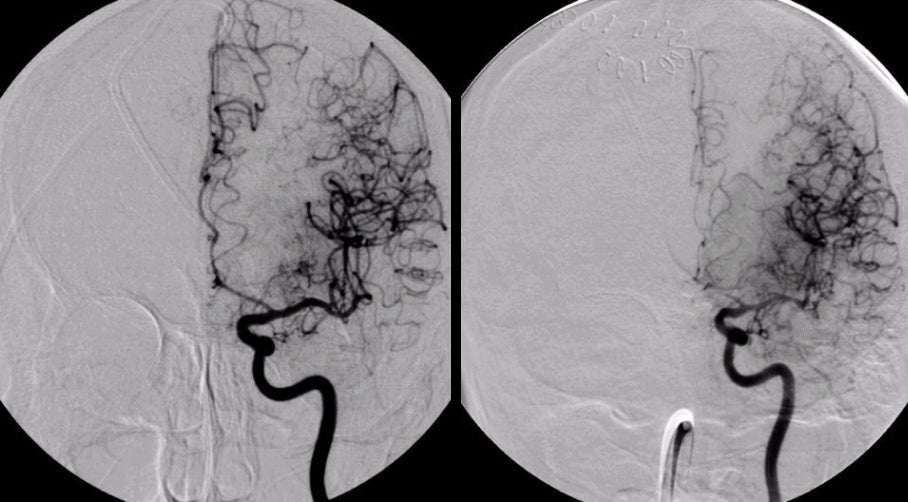
|
A 33 year-old man presented with a sudden, severe headache, nausea and vomiting. On angiogram, an anterior communicating artery aneurysm was seen, which was successfully treated surgically the next day. Seven days later, the patient developed a headache and right sided weakness. |

![]()
![]()
| Vasospasm following Subarachnoid Hemorrhage. Cerebral angiogram,
Left internal carotid
artery injection, AP view. (Left) Pre-operative angiogram, (Right) 7 days after the surgery. Compared to the pre-operative angiogram on
the left, note the severe narrowing of the left anterior cerebral
artery and less so of the middle cerebral artery. This is the
picture of vasospasm, a known delayed complication of subarachnoid
hemorrhage (SAH). ICA = internal carotid artery, MCA = middle
cerebral artery, ACA = anterior cerebral artery. Vasospasm is reported to occur in as many as 70% of patients with SAH and is clinically symptomatic in as many as 30% of patients. It most commonly occurs 4-14 days after the onset of bleeding. If severe enough, vasospasm may lead to progressive ischemia and stroke. In some cases, the acute stroke then results in edema, herniation and death. Vasospasm is typically treated with the calcium channel blocker nimodipine, volume expansion, mild elevation of blood pressure, and in some cases, angioplasty of the involved blood vessels. All of these treatments are better tolerated after the aneurysm has been successfully treated. |
Revised
11/18/06.
Copyrighted 2006. David C Preston